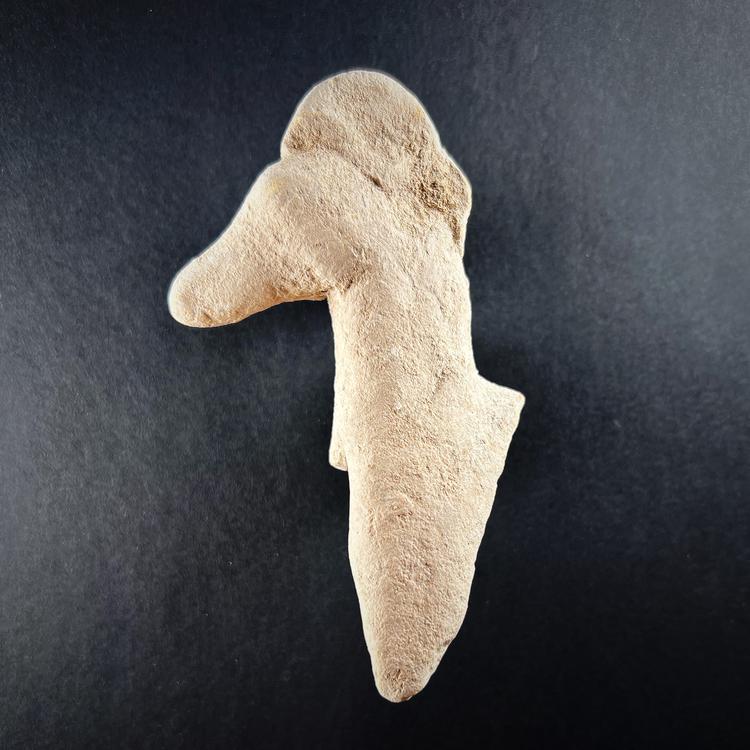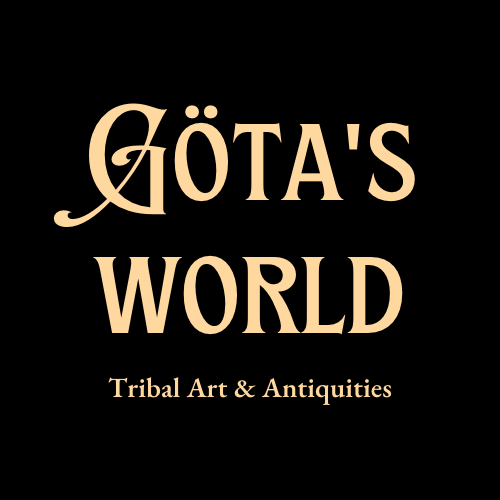Cypro-Archaic Terracotta Horse Figurine Fragment
Cypro-Archaic Terracotta Horse Figurine Fragment
Couldn't load pickup availability
Cypro-Archaic Period I-II, c. 700–475 BC, Kourion, Republic of Cyprus
This mesmerizing terracotta fragment from the Cypro-Archaic period captures the head of a handmade horse figurine, crafted in the distinctive abstract style of Iron Age Cyprus. The horse’s long, slender neck, pointy ears, flowing mane with a prominent forelock highlight the artistic skill and symbolic significance of these votive offerings.
Cypriots of this era created simple yet evocative figurines using solid terracotta, often shaping coarse faces and cylindrical bodies with clay pellets for features such as hats, eyes, and ears. These figures frequently depicted horses and riders, symbolizing warfare, status, and devotion. Horse and chariot figurines, including quadriga models, were left at sanctuaries as offerings to male deities or placed in the graves of the elite as markers of privilege and symbols of protection for the afterlife.
The prominence of such figures points to a period of significant conflict in Cyprus during the Iron Age, when equestrian prowess and chariotry were symbols of martial and societal elite. The sanctuary of Apollo Hylates at Kourion, where many similar artifacts have been discovered, highlights the reverence for Hylates, a local god later identified with the Greek Apollo. Similarly, the sanctuary of Avia Irini yielded a wealth of war chariot models, reflecting the role of horses in both ritual and conflict.
This fragment offers an invaluable glimpse into the religious practices, artistic traditions, and societal structures of ancient Cyprus, making it an exceptional piece for collectors and historians alike.
Good condition. Age-related wear and corrosion. Chip and nicks. The object is covered with a thin layer of earthy encrustation. Size approx. 10,8cm x 5,4cm x 2,7cm.
Provenance: According to information, from the collection of professor Dr. Med. Albert Fischer, 1891–1956. Founder and director of the Carlsberg Foundation biological institute, Copenhagen (1932–1956). Albert Fischer acquired antiquities during his travels in the 1930s-1950s.
For a similar examples see:
Chariot group, The Metropolitan Museum of Art, Accession Number: 74.51.1800 (https://www.metmuseum.org/art/collection/search/241355)
Figurine, Louvre, Accession Number: AO 32412 (https://collections.louvre.fr/en/ark:/53355/cl010359455)
Figure, The British Museum, Accession Number: 1896,0201.219 (https://www.britishmuseum.org/collection/object/G_1896-0201-219)
Terracotta horse and rider figurine (tomb gift), Ashmolean Museum, University of Oxford, Accession Number: AN1888.1267 (https://collections.ashmolean.org/object/304807)
References and further reading:
Terracotta Figurines from Kourion in Cyprus, John Howard Young & Suzanne Halstead Young, Published by: The University Museum, University of Pennsylvania, Philadelphia, 1955.
Handbook of the Cesnola Collection of Antiquities from Cyprus, John L. Myres, The Metropolitan Museum of Art, 1914.
Horse and Rider Figurines from Ancient Marion, Chelsea Walter, Arizona State University, December 2014.


-
Shipping
The shipment will be prepared in the course of 3-5 days and dispatched via Posti Group Oyj or purchased item(s) can be picked up from our shop during the store's opening hours (Tarkk’ampujankatu 4, 00140, Helsinki, Finland). Within the Finland, all items are shipped via Posti Group Oyj unless otherwise requested. We pack the items carefully and mainly in recycled materials because we want to save nature. You will receive the tracking number for your items by e-mail.
-
Returns
Returns and exchange will be accepted within fourteen days (14) of receipt at the purchaser’s cost to include freight and packaging. Items must be returned in the same condition as when they were shipped, and will not be accepted if damaged or altered in any way. Please inform us via email (info@gotanmaailma.fi) or by calling +358408408352 before sending. We do not accept returns more than 14 days after delivery.


